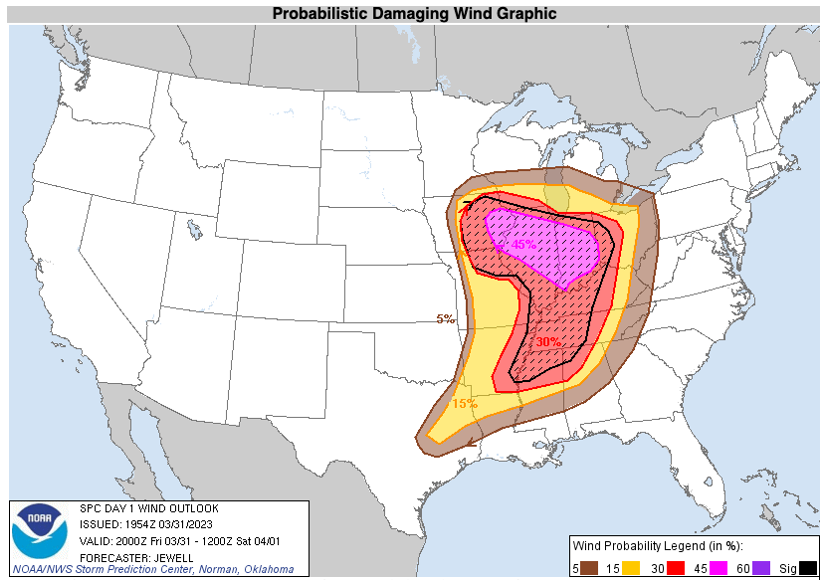Our hearts go out to those, including a Purdue employee, that lost loved ones and friends, during the recent severe storms. Many also lost homes, buildings, animals, and trees.
The storms’ origins in the Southwestern U.S. literally vacuumed up black cutworm moths and “spit them out” during its passage through the Midwest. Refer to the “Black Cutworm Adult Pheromone Trap Report,” below, featuring moth captures that are a mix of zeroes and eye-popping numbers. It is not unusual at this time of year to have a few high catches mixed in with mostly zeroes, one of the reasons we want many cooperators all over the state is to overcome this variability. The weather fluctuations that are typical at this time of year are responsible for these ups and downs.
Often, we will receive freezing temperatures following these early spring flushes. Since the black cutworm isn’t particularly cold hardy, e.g., spending the winter in Southwestern States and Mexico, many likely perish during these cold spells. But they will keep filtering in over the coming weeks, and there are certain to be sufficient moths to lay eggs in the many winter-annual weeds (particularly broad-leaf weeds) and cover crops. We use these trap counts only as a timing mechanism or presence/absence gauge, to help determine when to start looking for them. A large number of moths DOES NOT equate to a disaster in the making and vice versa for small numbers of moths.
In the near future, we will publish color-coded maps with their anticipated development to help you to time your scouting trips. As a reminder, the cutworm threat will be greatest when there is a “green bridge” for them – shifting from weeds and cover crops to seedling corn as it emerges. We recognize that this is often unavoidable, but still worth mentioning. BCW larvae cannot go long without feeding, so a period with no host plant material can mean death.
The following NOAA high-wind outlook, issued on March 31, 2023, graphically shows the origins in Texas and fanning out through the Midwest:



